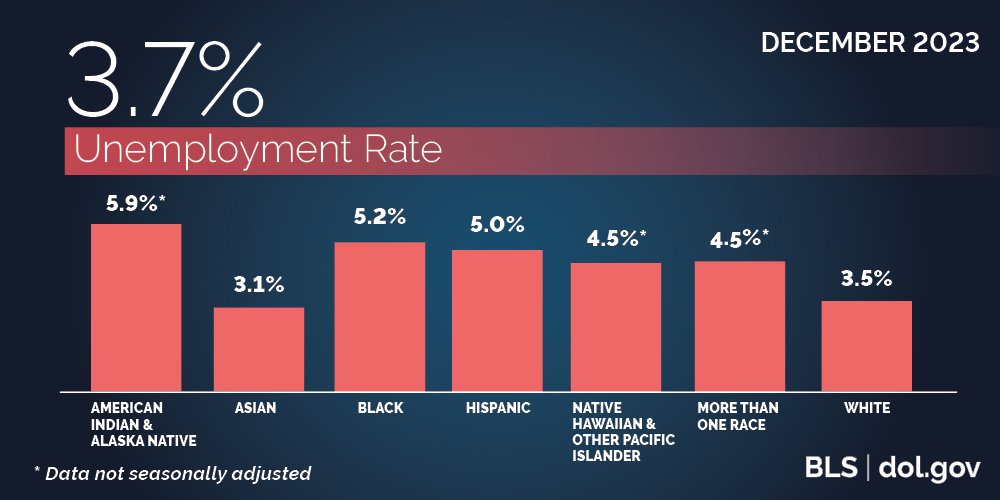 The DE OFCCP Week in Review (WIR) is a simple, fast and direct summary of relevant happenings in the OFCCP regulatory environment, authored by experts John C. Fox, Candee J. Chambers and Cynthia L. Hackerott. In today’s edition, they discuss:
The DE OFCCP Week in Review (WIR) is a simple, fast and direct summary of relevant happenings in the OFCCP regulatory environment, authored by experts John C. Fox, Candee J. Chambers and Cynthia L. Hackerott. In today’s edition, they discuss:
- FAR Council Submitted for OMB Approval Proposed Rule on “Pay Equity and Transparency in Federal Contracting”
- Federal Judge Ruled EEO-1 Reports Not Protected Under FOIA Exemption for Confidential Commercial Information
- JOLTS Report – Job Openings Decreased by 62k in November, Rate Unchanged at 5.3%
- Economy Added 216k Jobs in December, Unemployment Rate Unchanged at 3.7%
- In Brief
- New Publications
- Looking Ahead: Upcoming Date Reminders
Exclusive Coverage
Monday, December 4, 2023: FAR Council Submitted for OMB Approval Proposed Rule on “Pay Equity and Transparency in Federal Contracting”

The Proposed Rule would implement President Biden’s Executive Order (“EO”) 14069, which he issued on March 15, 2022. We discussed this EO in a related story last May (see the third paragraph). According to the description on RegInfo.gov, the proposal, if finalized, would “limit or prohibit contractors and subcontractors from seeking and considering information about job applicants’ existing or past compensation when making employment decisions for certain positions.” It would also “require contractors and subcontractors to disclose the compensation or range thereof to be offered to the hired applicant in job announcements for certain positions.”
Friday, December 22, 2023: Federal Judge Ruled EEO-1 Reports Not Protected Under FOIA Exemption for Confidential Commercial Information
Decision Latest Development in Ongoing Saga That Began Almost 18 Months Ago
US DOL/OFCCP Ordered to Produce EEO-1 Reports at Issue by February 20, 2024

How We Got Here
On August 18, 2022, OFCCP announced that it received a FOIA request under the Freedom of Information Act (FOIA) from reporter Will Evans of the Center for Investigative Reporting (“CIR”) for all data from EEO-1 consolidated Component 1 (Type 2) Survey Reports (EEO-1 Report) filed by federal contractors from 2016-2020. At the time, OFCCP stated that it “has reason to believe that the information requested may be protected from disclosure under FOIA Exemption 4, which protects disclosure of confidential commercial information.”
As the OFCCP explained in Item #8 of its Submitter Notice Response Portal Frequently Asked Questions, “FOIA Exemption 4 protects from disclosure “trade secrets and commercial or financial information obtained from a person [that is] privileged or confidential.” 5 U.S.C. § 552(b)(4).
The August 18, 2022, announcement set off an odyssey with several agency false starts and extended deadlines for contractors to object to OFCCP’s potential disclosure of the requested data. After initially creating a FOIA Submitter Notice Portal webpage, OFCCP continuously updated its missives to contractors, identifying objectors, providing notice to contractors as to their right to object, and evaluating objections it had received. The last time OFCCP updated the portal webpage was in April 2023, when the agency reported it would continue to evaluate contractor objections through at least the end of September 2023.
Shortly after the OFCCP’s August 2022 announcement, John Fox noted in the WIR that proving up an Exemption 4 (HR/business Trade Secrets) defense to the FOIA request at issue here would be “almost impossible.”
Our most recent previous update of this ongoing saga discussed Judge Alsup’s initial case management conference on April 13, 2023.
What Did the Judge Say?
On December 14, 2023, Judge Alsup held a hearing on the parties’ cross-motions for summary judgment. Addressing those motions in his December 22, 2023 ruling, the judge focused on whether the EEO-1 Report data requested constituted “commercial” information protected by FOIA from disclosure. Noting that FOIA exemptions must be narrowly construed, he rejected the DOL’s arguments that (1) EEO-1 Reports are commercial in nature because they contain information about headcount totals and staffing levels across job occupation categories and (2) the demographic data in the EEO-1 Report reveals the company’s diversity within its workforce which is also commercial.
In reaching this conclusion, Judge Alsup pointed out that:
- “The EEO-1 form contains broadly sweeping categories such as ‘professionals’ and ‘senior officials’ which are to be used irrespective of relevant job categories that are found within any one industry. As a result, the report cannot itself yield any commercial insight that is specific to the operations of the federal contractor.”
- There is nothing “inherently commercial” in the EEO-1’s diversity data. “Like names or birthdays, the demographic background of employees does not speak to the commercial contributions of a company’s workforce…”
- The compounded effect of releasing five years’ worth of data to plaintiffs would not reveal the type of insight into a given company’s operations that could not be revealed by any single EEO-1 Report. “To be clear, it will be approximately eight years since the first FOIA request and almost four years since the most recent request. Even if an objector could plausibly establish that five years’ worth of information would reveal commercial information, that data would probably be stale by the time it was disclosed.”
Since he concluded that the data at issue was not “commercial” in nature, Judge Alsup’s ruling did not reach the issue of whether this information was privileged or confidential.
DOL/OFCCP Have Until February 20, 2024, to Produce the Reports or Appeal the Decision
In his December 22 ruling, the judge ordered DOL/OFCCP to produce the remaining EEO-1 Reports at issue by January 19, 2024. However, on December 27, the DOL requested “an extension of the production deadline to allow the Government time to consider its appellate options.” The CIR agreed to this request, and the following day, Judge Alsup granted the request to extend the deadline to February 20, 2024, which is also the deadline for the DOL to appeal the decision.
Wednesday, January 3, 2024: JOLTS Report – Job Openings Decreased by 62k in November, Rate Unchanged at 5.3%

In November, job openings decreased in transportation, warehousing, and utilities (-128,000) and in the federal government (-58,000). Job openings increased in wholesale trade (+63,000).
Hires, Total Separations, Quits, Layoffs/Discharges & Other Separations All Down
The number of hires in November was 5,465,000 compared to the adjusted 5,828,000 number for October (-363,000). The rate decreased to 3.5 percent, compared to the adjusted 3.7 percent rate in October. The number of hires decreased in professional and business services (-163,000).
Total separations were 5,340,000 for November, compared to 5,632,000 for October (-292,000). The November rate was 3.4 percent, down a bit from 3.6 percent in October. Over the month, the number of total separations decreased in professional and business services (-158,000) and in educational services (-28,000).
Within separations, quits in November were 3,471,000, down from 3,628,000 in October (- 157,000). The November rate was 2.2 percent, a slight decrease from 2.3 percent in October. The number of quits decreased in professional and business services (-77,000) and in educational services (-23,000).
Layoffs and discharges in November were 1,527,000, down from 1,643,000 in October (-116,000). The November rate held steady at 1.0 percent. The number of layoffs and discharges decreased in durable goods manufacturing (-18,000).
The number of other separations was 342,000 in November, down from 361,000 in October (-19,000). The percentage rate remained steady at 0.2.
BLS posted interactive graphs here.
Three-Month Comparison Chart of Job Openings vs. Jobs Filled
Our below table reports the number of available jobs (as taken from the revised JOLTS reports) from the last four months of available data, as revised.
| Reports | August | September | October | November |
| JOLTS available jobs
Prior/mo. comparison |
9,497,000
(577,000 > July)* |
9,350,000
(147,000 < August) |
8,852,000
(498,000 > September) |
8,790,000
(62,000 > October) |
*July Job Openings were 8,920,000
Note: BLS is scheduled to release the JOLTS Report for December 2023 on Tuesday, January 30, 2024.
Friday, January 5, 2024: Economy Added 216k Jobs in December, Unemployment Rate Unchanged at 3.7%

The labor force participation rate, at 62.5 percent, and the employment-population ratio, at 60.1 percent, both decreased by 0.3 of a percentage point in December. Those percentages were 62.8 and 60.4 respectively in November.
The number of short-term unemployed persons was 6,268,000 in December, up by 6,000 from the adjusted 6,262,000 figure in November. The number of long-term unemployed (those jobless for 27 weeks or more) was 1,245,000 (19.7 percent of the total unemployed), which was up by 25,000 from November’s adjusted figure of 1,220,000 (19.4 percent of the total unemployed).
Major Worker Groups
The BLS/DOL charts below illustrate the numbers by race and ethnicity (not seasonally adjusted):
Our table below compares the major worker groups’ numbers from the last three months of available data:
|
The Employment Situation – December 2023 |
||||
| Unemployment Rate | October
2023 |
November
2023 |
December 2023 | Feb 2020 Pre-Pandemic |
| National (Seasonally adjusted) |
3.9% | 3.7% | 3.7% | 3.5% |
| White | 3.5% | 3.3% | 3.5% | 3.0% |
| Black | 5.8% | 5.8% | 5.2% | 6.0% |
| Asian | 3.1% | 3.5% | 3.1% | 2.5% |
| Hispanic (Seasonally adjusted) |
4.8% | 4.6% | 5.0% | 4.4% |
| Native Hawaiians & Other Pacific Islanders | 5.8% | 2.8% | 4.5% | 2.7% |
| Two or More Races (Not seasonally adjusted) |
5.9% | 5.0% | 4.5% | 6.1% |
| Men (20+) | 3.7% | 3.7% | 3.5% | 3.2% |
| Women (20+) (Seasonally adjusted) |
3.3% | 3.1% | 3.3% | 3.1% |
| Veteran (Not seasonally adjusted) |
2.7% | 2.8% | 3.0% | 3.7% |
| Individuals with Disabilities (Not seasonally adjusted) |
7.4% | 7.3% | 6.7% | 7.8% |
See Also:
- BLS has additional, interactive graphs available here
- President Biden’s remarks
- Acting Secretary of Labor Julie Su’s statement
- White House Counsel of Economic Advisers’ blog
- USDOL video short illustrating the report
In Brief
Wednesday, December 27, 2023: US EEOC Submitted Its Finalized PWFA Regulations for OMB Approval

The statute provides that the EEOC must issue finalized regulations to implement it by December 29, 2023. Now that the EEOC has submitted the Final Rule, OMB will complete its review process. As per the usual procedure, the Final Rule will not be published unless and until the OMB approves it. Generally, OMB has 90 days to complete its review of each submission. However, there is no minimum period for review, and the review period may be extended.
Tuesday, January 2, 2024: White House Approved US DOL WHD’s “Employee or Independent Contractor” Classification Final Rule; Publication Imminent

We previously reported that the WHD submitted the Final Rule for OMB review on September 28, 2023. Now that the OMB has approved the Final Rule, the WHD’s publication of it is imminent.
New Publications
Looking Ahead:
Upcoming Date Reminders
November 2023: EEOC’s (now overdue) target date for publication of an Interim Final Rule to Amend Procedural & Administrative Regulations to Include the PWFA (RIN: 3046-AB31)
November 2023: EEOC’s target date (now overdue) to publish its NPRM to amend its regulations on exemptions to certain recordkeeping and reporting requirements (RIN: 3046-AB28)
November 2023: U.S. DOL WHD’s (now overdue) target date for its Final Rule on Employee or Independent Contractor Classification Under the Fair Labor Standards Act (RIN: 1235-AA43); NEW – OMB approved this Final Rule on January 2, 2024, clearing the way for publication
December 29, 2023: Statutory deadline (now overdue) for EEOC to finalize regulations to enforce the Pregnant Workers Fairness Act (RIN: 3046-AB30); NEW – EEOC submitted its Final Rule for OMB review on December 27, 2023
December 2023: U.S. OSHA’s current target date (now overdue) to publish its Final Rule on Occupational Exposure to COVID-19 in Healthcare Settings (RIN: 1218-AD36)
January 15, 2024: Statutory deadline for EEOC’s publication of its Final Rule on the “2024 Adjustment of the Penalty for Violation of EEOC’s Notice Posting Requirement” (RIN: 3046-AB26)
January 22, 2024: Effective date of FAR Council Final Rule mandating Project Labor (i.e. Union) Agreements on large federal construction projects
January 29, 2024: Comment deadline on US DOL VETS request to renew currently approved VETS-4212 reporting requirement
February 2, 2024: Expiration date for Continuing Resolution to fund certain government agencies – including the US DOL, the EEOC, & the NLRB – at current levels
February 12, 2024: Comment deadline for OFCCP’s request to renew OMB approval of its online Supply & Service Contractor Portal interface, including new requirement for contractors to provide UEI numbers for the parent company and its establishments
February 12, 2024: Effective date for US DOL WHD Final Rule on “Nondisplacement of Qualified Workers Under Service Contracts”
February 20, 2024: Deadline for comments on US DOL’s Request for Information seeking public input on whether to revise the list of Schedule A job classifications that do not require permanent labor certifications to include occupations in Science, Technology, Engineering & Mathematics (“STEM”) & other non-STEM occupations.
February 26, 2024: Effective date of NLRB’s Final Rule on Standard for Determining Joint-Employer Status under the NLRA (previous December 26, 2023, effective date extended)
NEW February 2024: FAR Council’s target date to publish Proposed Rule on “Pay Equity and Transparency in Federal Contracting”
March 2024: EEOC’s target date for proposal to amend its regulations regarding the electronic posting of the “Know Your Rights” Poster (RIN: 3046-AB29)
March 2024: U.S. NLRB’s target date for its Final Election Protection Rule (RIN: 3142-AA22)
April 3 – April 5, 2024: DEAMcon24 New Orleans – The DEAMcon24 Program is now live!
April 2024: U.S. DOL WHD’s current target date for its Final Rule on Defining and Delimiting the Exemptions for Executive, Administrative, Professional, Outside Sales, and Computer Employees (Overtime Rule) (RIN: 1235-AA39)
September 2024: OFCCP’s current target date for its Notice of Proposed Rulemaking to “Modernize” Supply & Service Contractor Regulations (RIN: 1250-AA13)
September 2024: OFCCP’s current target date for its Final Rule on “Technical Amendments” to Update Jurisdictional Thresholds & Remove Gender Assumptive Pronouns (RIN: 1250-AA16)
September 2024: EEOC’s anticipated date for amending its FOIA procedures to add fees for electronic disclosure of records (RIN: 3046-AB20).
September 2024: U.S. DOL WHD’s target date to publish an NPRM on “Employment of Workers With Disabilities Under Special Certificates” (Subminimum Wage Rule) (RIN: 1235-AA14)
SUBSCRIBE.
Subscribe to receive alerts, news and updates on all things related to OFCCP compliance as it applies to federal contractors.
OFCCP Compliance Text Alerts
Get OFCCP compliance alerts on your cell phone. Text the word compliance to 18668693326 and confirm your subscription. Provider message and data rates may apply.


